Trier
Together with Worms, Trier is the oldest city of Germany. I visited Trier once before, with secondary school in the fourth grade so I must have been something like 15 or 16 years old. Unfortunately, I don't have any recollection of that trip but fellow pupils of those days told me some stories recently, I will not share here. At the time I was not a fan of Germany yet, and to be honest I needed some help from Kurt Hielscher's photos to really start looking with different eyes. And so I did this time during our holidays in May 2025. We parked the van at a parking lot along the Mosel river and walked to the center to start at one of its highlights: the Port Nigra.

Kim and my youngest son approaching the Porta Nigra from the south, but for Kurt Hielscher's photo, we needed to go to the north side, outside the former city walls.

Porta Nigra, 1924. Photo: Kurt Hielscher.

Porta Nigra, 2nd of May 2025. Photo: Casper Molenaar.
The Porta Nigra dates back to 170 AD and is the oldest citygate of its kind in Germany today: 36 meters wide, 1,5 deep and 30 meters high. The northern gate was part of the 6418 meters long city walls that do not exist here anymore. Originally, the sandstone blocks from which it was built were light in colour, but over the centuries it turned black from weathering and rust from the iron staples that held the blocks together, hence the name.
Inside the Porta Nigra: 1st floor with remnants of the church that was demolished ater by Napoleon.
At the beginning of the 11th century, a Greek hermit Simeon had come to live in the ruins of the gate. After his death in 1035, a church was named after him: the St. Simeon's Church. The Porta Nigra was incorporated into this double church. Today, the apse on the eastern side is still a reminder of this church. All other extensions were removed under Napoleon.

Kim in the lower east tower.
After 1804, the gate was restored to its original state by order of Napoleon. The Porta Nigra was used again as a city gate in between 1822 and 1875. Starting 1969 extensive conservation works were executed lasting four years. The Porta Nigra was added to the UNESCO World Heritage List in 1986 together with other monuments in Trier.
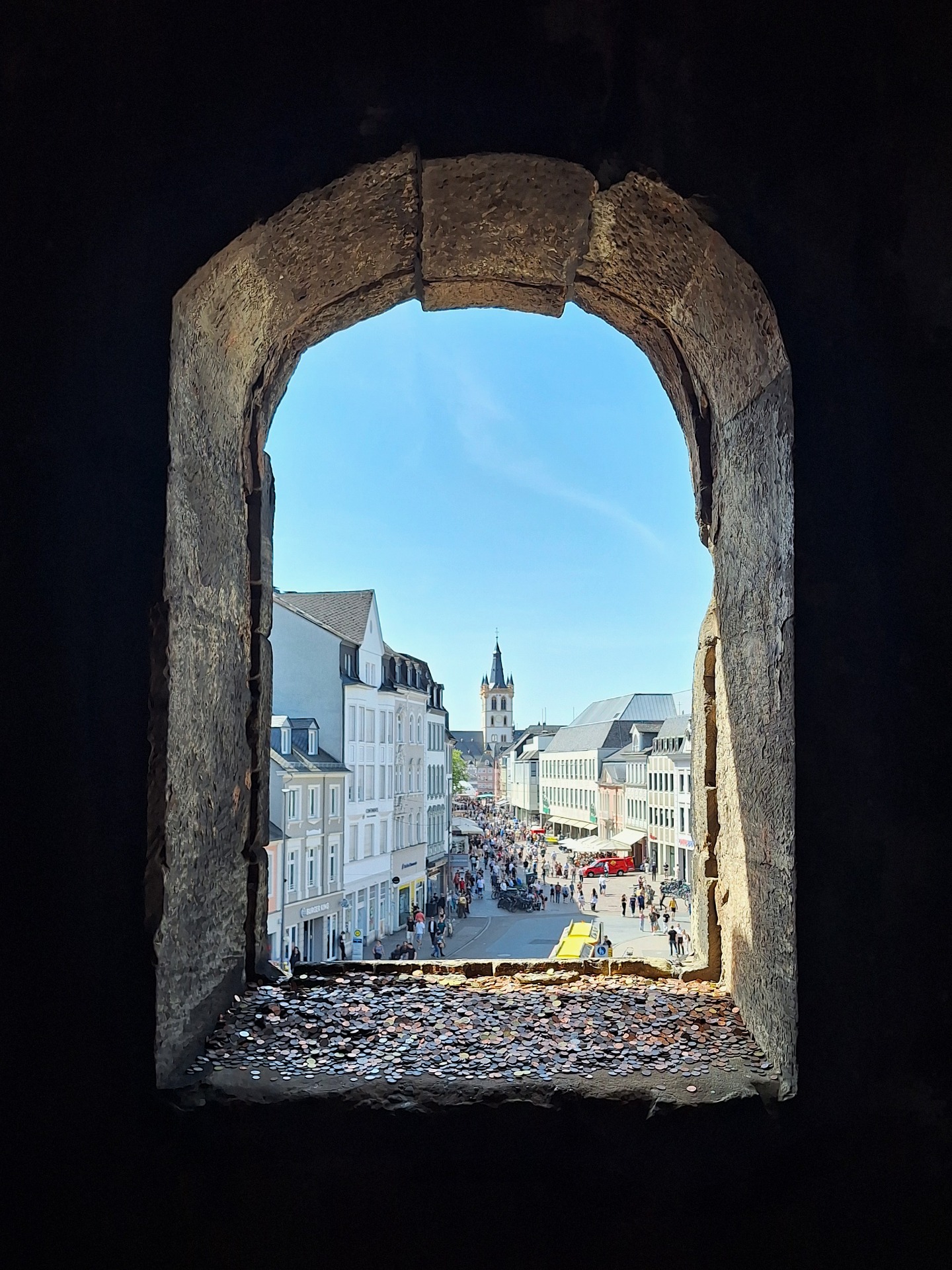
View from the Porta Nigra on the city center of Trier with the Sankt Gangolf Kirche dominating the skyline.
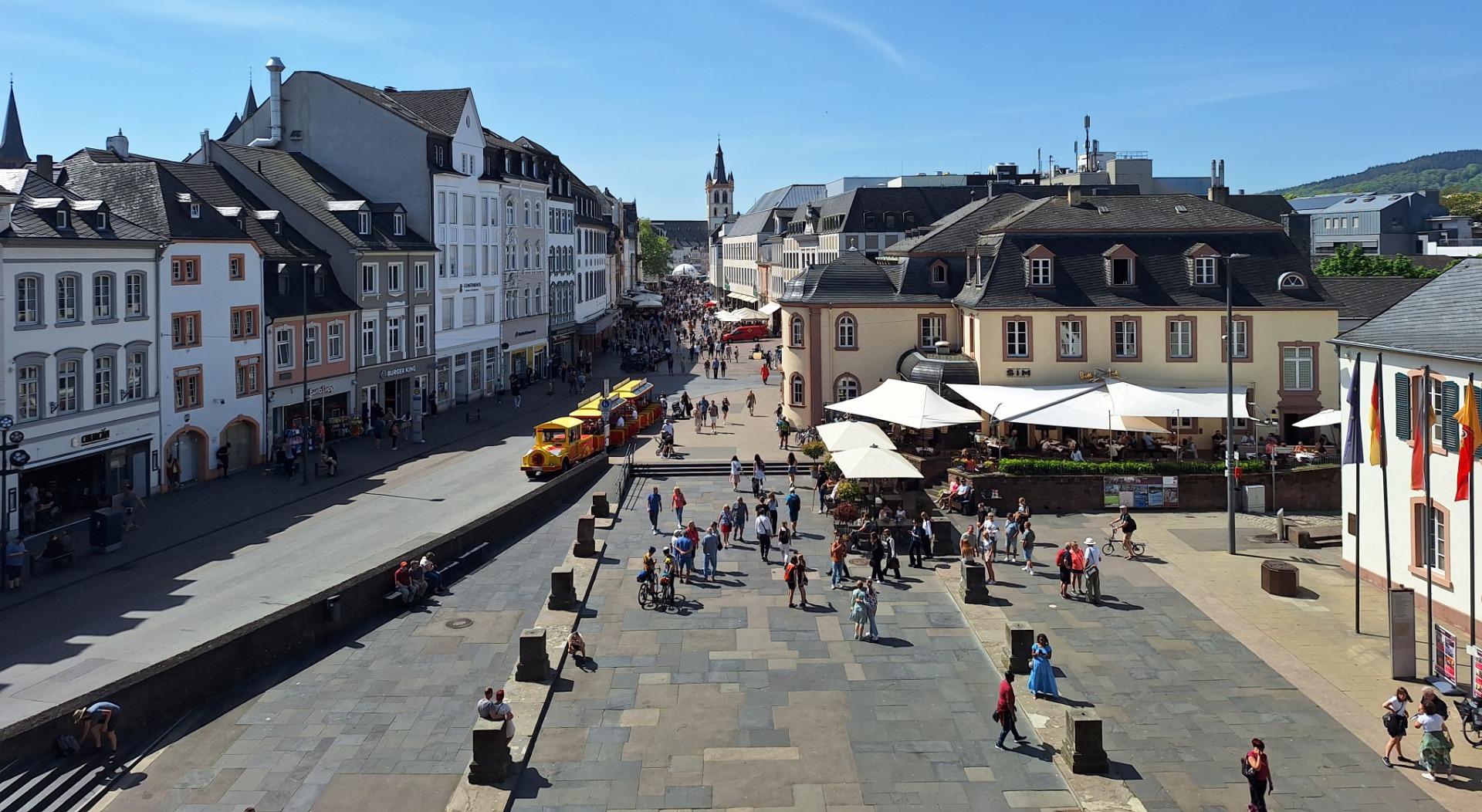
Another view from the Porta Nigra on the city center of Trier with the Sankt Gangolf Kirche dominating the skyline.

After visiting the Porto Nigra, we went back and further into the city.

The center of the city is the Hauptmarkt, a lovely and characteristic square. This is what one can hope for when visiting a relative small town of just over a 100 thousand souls. The weather was great and the city lively. We couldn't have chosen a better day.

View on the Trierer Dom from the Hauptmarkt.
Nearly did I miss this photo from Kurt Hielscher, because it is only in the 1924 edition of Kurt Hielscher's Germany book. In advance I knew I should get access to the Sankt Gangolf Kirche from where I think Kurt Hielscher made his stunning photo from the Dom & Liebfrauenkirche, but on arrival I didn't find anyone inside from the church to ask. The entrancefence to a small garden is just to be found on the Hauptplatz, but initially I did't see it making me walk around the whole block to find it in the end. Here the result with different sizes of both photos.

Dom & Liebfrauenkirche, 1924. Photo: Kurt Hielscher.

Dom & Liebfrauenkirche, 2nd of May 2025. Photo: Casper Molenaar.
Inside the Dom.
Trier Cathedral, or St. Peter's Cathedral, is the oldest episcopal church in Germany. Its core is based on a Roman basilica built from 326 onwards by the Roman Emperor Constantine the Great. In the 11th century, the cathedral received its current west façade. We entered the gardens of the cloister, a green and tranquil oasis, from within the Cathedral. Make sure to don't miss the basic looking door towards it. It was free of charge and open to the public and a gem for taking beautiful photos.

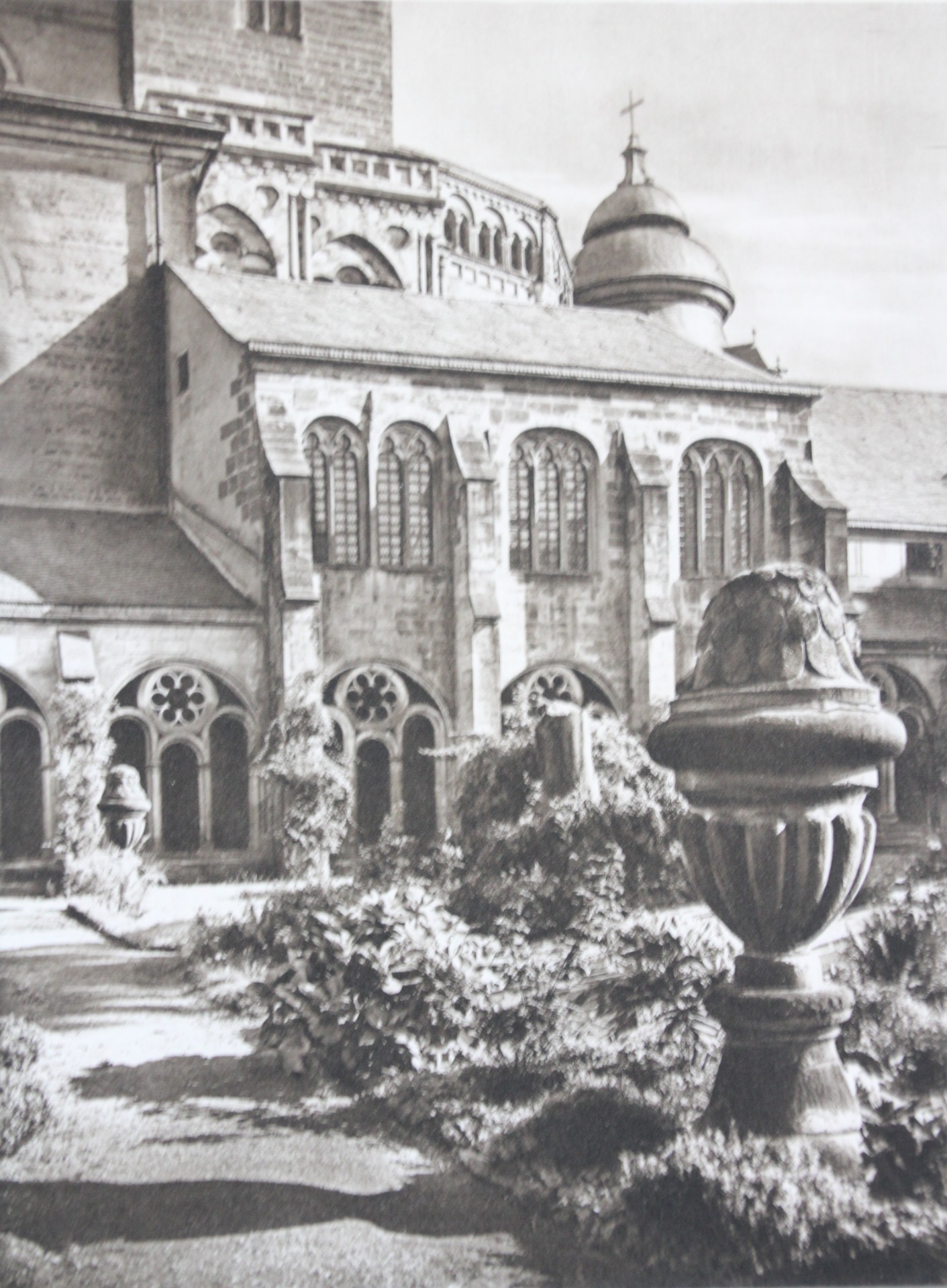
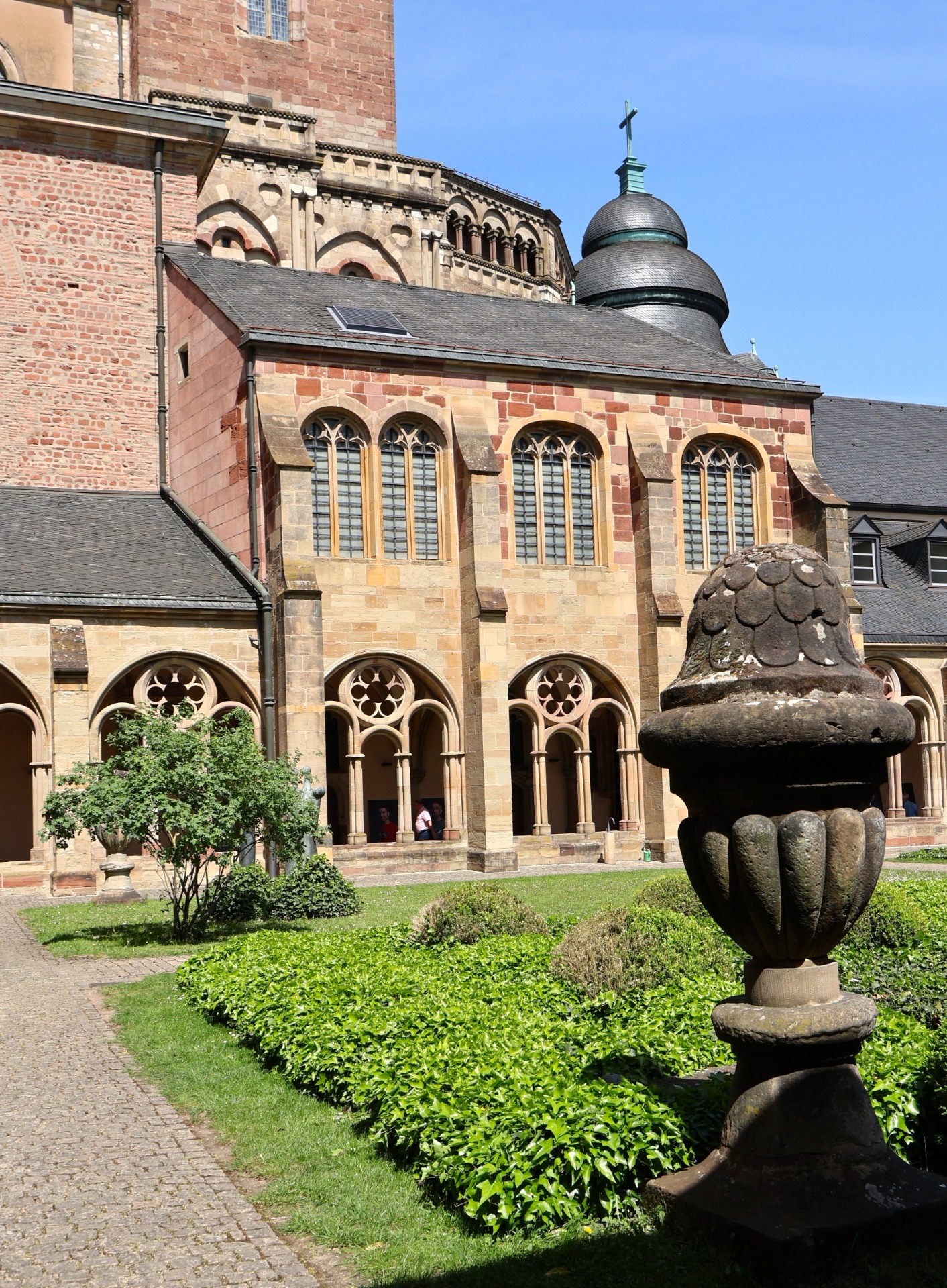

Restaurants and terraces at the Kornmarkt.
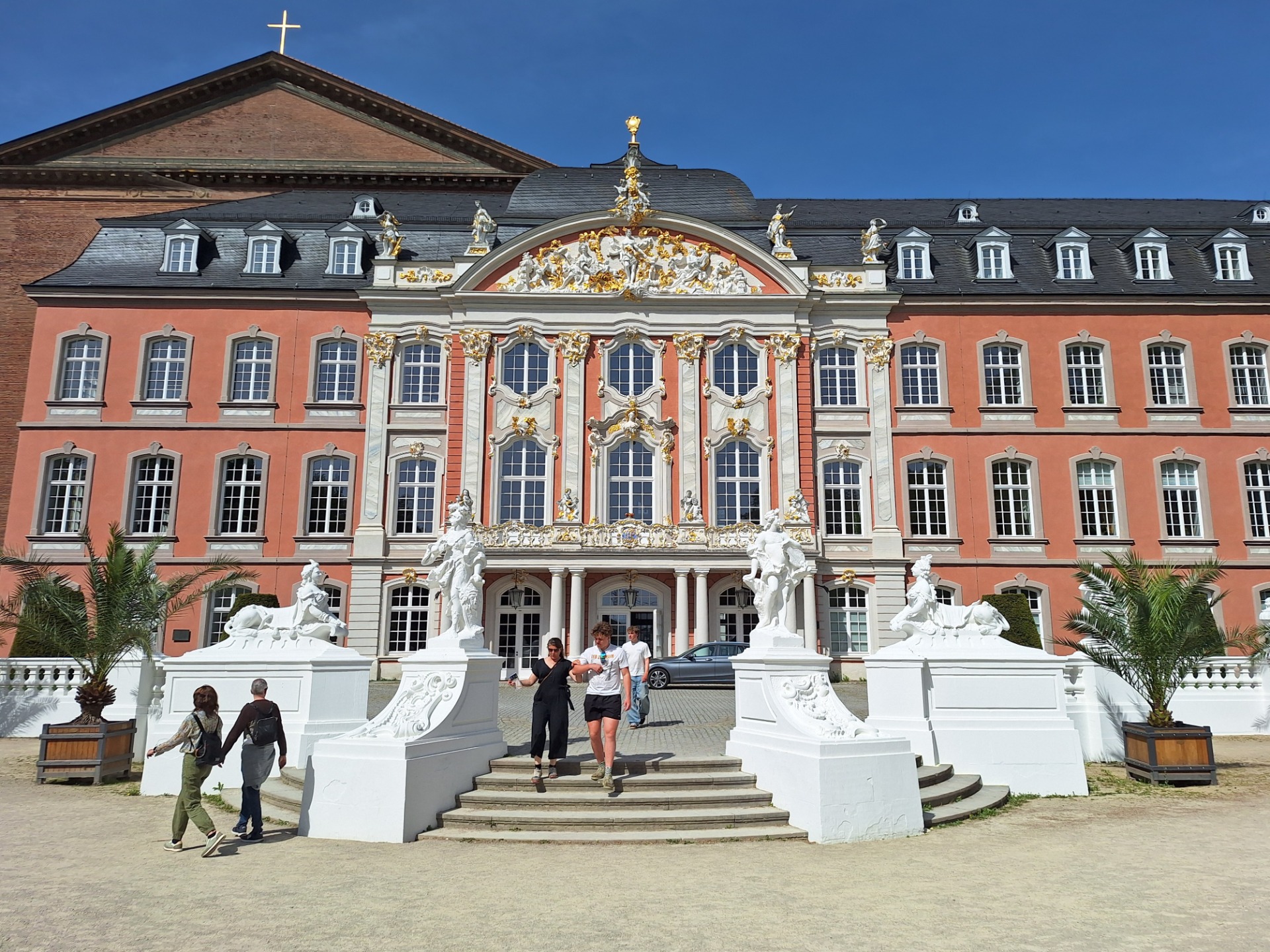
Kurfürstliches Palais.
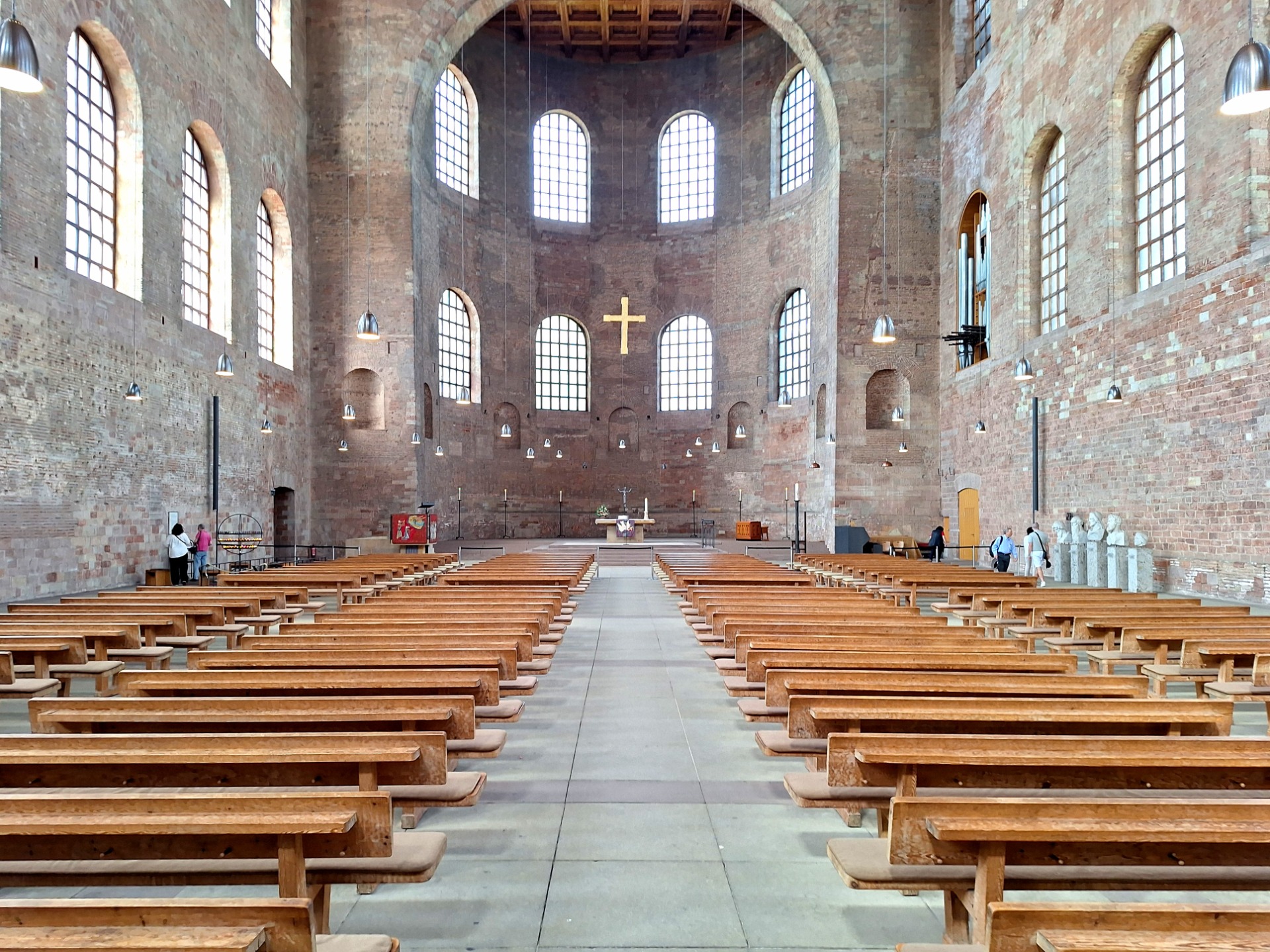
Konstantin-Basilika.

A family posing at the statue of Karl Marx, who was born in Trier. We didn't visit the Karl Marx'hous though. Let's keep that for another day when the weather might be less.
Below: view on Trier from the Porta Nigra with on the left the Trierer Dom and the St. Gangolf Kirche on the right.

